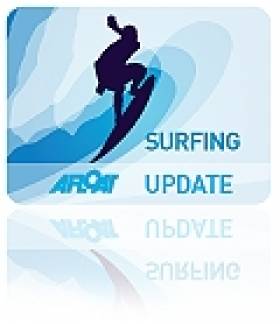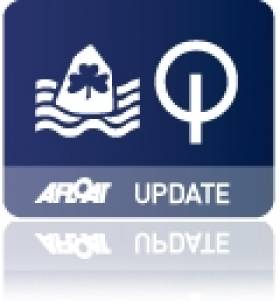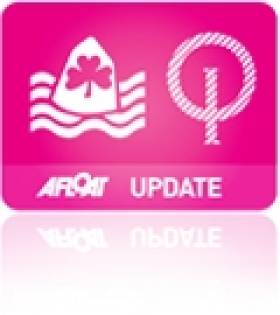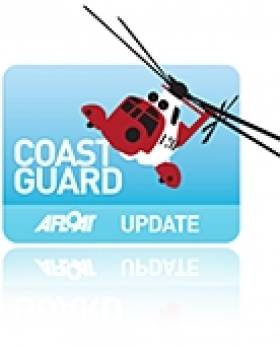Displaying items by tag: Wales
Young Bundoran Surfer Joins Northcore Stable
#SURFING - Irish surfer Conor Maguire is one of the four new waveriders from the UK and Ireland to become part of the Northcore stable. In the vid below Maguire is mentioned at 2 minutes 11 seconds.
The Bundoran resident joins Sandy Kerr of Tynemouth, England, Craig Burrows of south Wales and Jersey's Charlotte Bayliss on the team heading into 2012.
The young surfer is already making a name for himself on the heavy waves of Ireland's northwest coast like the Peak, and regularly paddling into the meanest of Ireland's slabs such as Rileys.
Maguire is also starting to charge in the big swells, learning the tow-in craft from some of Ireland's most experienced big wave crews, including Northcore ambassador Richie Fitzgerald.
A Northcore spokesperson said of the recent additions: "Between them there's a huge amount of experience, style and skill. All of the riders are representing the very best of surfing talent from their respective home locations and all have achieved respect and recognition on a national scale."
Russian Ambassador Proposes Reward for Swanland Rescuers
#COASTGUARD - Russia's ambassador to Britain has proposed rewarding rescuers involved in the search for missing seamen in the Irish Sea last week following the sinking of the cargo ship Swanland.
As previously reported on Afloat.ie, the cargo vessel - carrying 3,000 tonnes of limestone - went down some 10 miles west of the Lleyn peninsula in north Wales in the early hours of last Sunday.
Two of the eight crew, who were all Russian, were recovered from the sea. A third was found deceased, while the remaining five are still missing.
As many as 11 coastguard rescue teams were involved in the search operation, which also saw an RAF rescue helicopter - piloted by Prince William - lend assistance.
At a meeting with the two rescued sailors in London last Wednesday, Ambassador Alexander Yakovenko commented: “What if we propose [the rescuers] to be rewarded by the Russian side?”
Russian news agency RIA Novosti has more on the story HERE.
McCann Best of Irish at Optimist British Nationals
Peter McCann ended his assault of the British Optimist National Champion at Pwllheli Sailing Club in 13th place. Other Irish team results inlcuded a 23rd for Cliodhna ni Shuilleabhain and a 16tth for Sean Donnelly. Full results here.
The 50th Volvo Gill Optimist National and Open Championship came to a close on Friday after a week of fantastic sailing in a mixture of racing conditions. The week started light with no wind for the 450 sailors but increased as the week progressed. Racing finished with sunshine but challenging conditions and 30-40 degree shifts.
After 12 races and talented, consistent sailing New Zealand’s Leonard Takahashi-Fry (13, Murrays Bay SC) takes the Volvo Gill Optimist Open Champion title “It’s really exciting to be Volvo Gill Optimist Open Champion. Sailing today was ok and pretty shifty but the weeks been great and as it went on I got better at sailing in the shifts. It’s been a bit cold, back home it’s hotter but it’s been pretty nice weather. I’ve really enjoyed sailing here and the event’s been well organized” said Leonard.
Arran Holman (14, Hollowell SC) is crowned Volvo Gill Optimist British National Champion “It’s been a really good week, enjoyable and very exciting. Today was really shifty and challenging out there but it was good and great conditions. It’s great to be the 50th National Champion and I’ve had a fantastic time” said 2010 Volvo Optimist End of Season Champion, Arran.
The trophy for the top British girl was awarded to Royal Lymington’s Mimi El- Khazindar (14) and Gill Race Team member Milo Gill Taylor (11, Spinnaker Sailing Club) secured the Junior fleet title. Close behind Milo was local sailor Huw Edwards (12, Port Dinorwic).
“It’s absolutely amazing! I’m so excited. Today was nerve racking but I won my first race. It’s my favourite sailing venue and I won the Regatta fleet here in 2008 so it’s great to win again” said GBR World Squad member Milo.
After 13 races the winner of the Regatta Racing fleet was 10 year old Matilda Nicholls (Royal Bermuda YC) who showcased talented sailing all week, followed by Sally Lorimer (Warsach SC).
Newly appointed IOCA (UK) Chairman, Simon Rogers paid tribute to a wonderful week of fun yet competitive racing “It’s been an incredible week with some absolutely fantastic sailing here at the 50th anniversary of the National Championships. We are delighted with the racing we have had all week and the conditions have been perfect ”.
Ni Shuilleabhain Third After Light Air Oppy Opener
Light fickle winds on the first day of the Volvo Gill Optimist Open and British National Championships in Pwhelli prevented top Irish top challenger Peter McCann from Royal Cork making an early breakthrough but other Irish sailors have prevailed in the senior fleet incuding Kinsale's Cliodhna Ni Shuilleabhain in joint third overall and the National Yacht Club's Sean Donnelly in ninth. Results to date here.
Some of the nation's finest young sailors struggled in light fickle winds. The day was overcast and the light conditions brought tricky shifts. The southerly wind struggled to get over 4 ½ knots but the frustrated Senior and Junior fleet sailors managed one race each in the light breeze.
After one race New Zealand's Markus Somerville (15, Wakatere BC) currently sits at the top of the Senior fleet followed by British sailor and 2010 Junior National Champion, Freddie Grogono. In the Junior fleet the USA dominate two of the top three positions with JC Hermus (11, Bellport Bay YC) in first, Welsh sailor Alexander Watson (9, Llyn Brenig) in second place and Ryan Hennessey (12, Bellport Bay YC) in third. Matilda Nicholls (10, Royal Bermuda YC) sits top of the Regatta racing fleet.
"We were fortunate that when the breeze did fill in it coincided with slack water. It was shifty out there but no more than we predicted and there was consistent pressure. The wind faded towards the end of Senior fleet races so we made the decision to shorten the course. We are pleased to achieve one race for both the Senior and Junior fleets in such light wind. Pwhelli is a great venue to hold the National Championships without as much tidal influence as other venues in the UK." Peter Saxton, Principle Race Officer Optimist National Main fleet
2011 Volvo Gill Optimist Spring Champion, Max Clapp (14, Royal Southern YC) is looking forward to getting back out on the water tomorrow morning "It was quite light and shifty out there but I sail best in light winds. I've raced here [in Pwllheli] before and I'm used to it being windy so it's a change it's so light. I like the venue here, it's great to launch from the beach and compared to Weymouth and Portland it's more open to the sea. I really like sailing in the class because of the numbers and it's nice to meet new friends. My aim for the week - I'd really like to be top Brit in my fleet."
More than 450 British and international sailors from as far afield as New Zealand, Australia, Hong Kong, the United Arab Emirates and South Africa have descended on Pwllheli for the 50th Optimist Open and National Championships, which run until Friday 5th August.
Racing is scheduled to resume tomorrow (Tuesday 2nd August) at 11.00 am. The event will see a maximum of 12 races for the Senior and Junior fleets.
McCann Leads Irish Optimist Challenge in Wales
Cork's Peter MCann Leads Irish hopes against some of the best of Britain's up and coming young sailors who are ready for a full week of racing at the 2011 Volvo Gill Optimist Open and National Championships, Pwllheli Sailing Club. Over 450 British and International competitors, from 15 nations will take part in the annual event from Saturday 30th July – Friday 5th August.
Ireland's Optimist Association arranged pre-event coaching in Pwhelli for Irish sailors attending.
Racing throughout the week will be split into five separate categories, the Senior Fleet for those aged thirteen to fifteen, the Junior Fleet for those aged eight to twelve, Regatta Racing aged eight and above and for those that are looking for transition to the Junior fleet, Regatta Coaching for those competing at the event for the first time and Mini Racers aged eight and nine, who are just learning to sail.
"This year we have more international entries than last year with a number of new countries involved including South Africa, Kenya, New Zealand and Finland. It is fantastic to attract so many young sailors from across the globe. In the British fleets some of the top sailors have progressed and moved on so the regatta is wide open. The next generation are coming through and will be using the National Championships to find their positions within their fleets. It will be an exciting event for all." Said Simon Rogers, ICOA (UK) Technical Officer.
In the senior fleet, 2011 World squad members will be using the opportunity to practice against overseas competition. 2011 Volvo Gill Optimist Inland Champion, Welshman Matt Whitfield (14, Penarth YC), Jamie Calder (13, Loch Tummel) and Joseph Burns (14, Spinnaker SC) are all looking to the take home the National Champion title. Gill Race Team member, Sarah Norbury will be looking to defend her top British girl title fending off competition from 2011 Euro team members Mimi El-Khazindar (14, Royal Lymington) and Georgia Booth (14, Scaling Dam SC).
2009 and 2010 Junior National Champion, Freddie Grogono (13, St Mawes SC) has progressed to the Senior Fleet and will be looking to triumph amongst his new competitors.
In the Junior fleet, 2011 Volvo Gill Optimist Inland Champion, William Heathcote (9, Royal Lymington) will be looking to repeat his success at Graftham Water but faces stiff competition from newly selected Gill Race team and World squad member Milo Gill-Taylor (11, Spinnaker YC).
From overseas Spain's Nestor Cano (14, C Nautic Vilassar De Mar) and Ireland's Peter McCann (14, Royal Cork YC) will be both be looking to repeat last year's success with top ten finishes "There are some really good sailors competing here in Pwllheli. It is my second National Championships over here and I really enjoyed last year in Weymouth and Portland. Compared to back home it is definitely wavier and the currents are different. It can also be hard to tell where the gust is coming from, but I'm really looking forward to getting out there and starting the racing" Said Nestor.
This is the first year that Volvo and Gill have jointly sponsored the Optimist Sailing Class in the UK and includes support for three major annual championships: The Volvo Gill Optimist Inland Championships, the Volvo Gill Optimist Open and National Championships and the Volvo Gill Optimist End of Season Championships which will be taking place at Rutland Sailing Club, 8-9 October. (Additional reporting by Sarah Alexander/Volvo)
Raging Bull Charges Back to Top of ISORA Fleet
After missing the last ISORA race the 2010 Champion Raging Bull charged back to the front of yesterday's 7-boat fleet in a blustery offshore race across the Irish Sea from Pwlhelli in Wales to Wicklow harbour on the Irish East coast. Second to Matt Davis's Sigma 400 was the Welsh J109 Sgrech and third the Royal Irish A35 entry Aztec III skippered by Peter Beamish.
The bad weather before the race and difficulties with delivery as well as a general poor forecast (and a rugby match) for the race was the
main reasons for a very disappointing turn out for what is normally a very popular race.
Some of the fleet – now moored in Wicklow harbour – are sailing in this morning's Round the Turbines race from nearby Arklow Sailing Club. Provisional ISORA results from the Pwllheli to Wicklow race are below.
ISORA interests now turn to the big offshore fixture of the season, the Dun Laoghaire to Dingle Race on Saturday, June 11th.
Scroll down for Race start pics by Cathy Mullan| Boat Name | Sail No. | Type | IRC Rating | IRC | Finish Time | Time elapsed | Time elapsed | Corrected | Corrected | Place | Place |
|---|---|---|---|---|---|---|---|---|---|---|---|
| (provisional) | No Spinnaker | Time | Time | Class | O/A | ||||||
| English Mick | GBR4771R | Beneteau 47.7 | 1.127 | IRC | 18:43:20 | 37700 | 10:28:20 | 42487 | 11:48:07 | 2 | 7 |
| Quite Correct | IRL 5405 | DS54 | 1.095 | IRC | DNS | - | - | - | - | - | - |
| African Challenge | IRL 2649 | Fast 42 | 1.077 | IRC | DNS | - | - | - | - | - | - |
| Tsunami | IRL 4007 | First 40.7 | 1.061 | IRC | 18:54:19 | 38359 | 10:39:19 | 40698 | 11:18:18 | 1 | 5 |
| Lancastrian | GBR 7682T | Starlight 14.5m | 1.059 | IRC | DNS | - | - | - | - | - | - |
| Rebellion | IRL 6001 | Nicholson 58 | 1.054 | IRC | DNS | - | - | - | - | - | - |
| Orna | IRL 532 | 1.042 | IRC | DNS | - | - | - | - | - | - | |
| Aztec 3 | IRL29832 | A35 | 1.034 | IRC | 18:59:14 | 38654 | 10:44:14 | 39968 | 11:06:08 | 3 | 3 |
| Jedi | IRL 8088 | J109 | 1.029 | IRC | 19:04:01 | 38941 | 10:49:01 | 40070 | 11:07:50 | 4 | 4 |
| Raging Bull | IRL 9666 | Sigma 400 | 1.027 | IRC | 18:57:47 | 38567 | 10:42:47 | 39608 | 11:00:08 | 1 | 1 |
| Miss Scarlett | IRL 4763 | Sunfast 40.3 | 1.025 | IRC | DNS | - | - | - | - | - | - |
| Sgrech | GBR9319R | J109 | 1.021 | IRC | 19:03:00 | 38880 | 10:48:00 | 39696 | 11:01:36 | 2 | 2 |
| Lula Belle | IRL 3607 | First 36.7 | 1.019 | IRC | 19:51:46 | 41806 | 11:36:46 | 42600 | 11:50:00 | 5 | 8 |
| First of September | IRL 8581 | First 43.5 | 1.016 | IRC | 20:47:59 | 45179 | 12:32:59 | 45901 | 12:45:01 | 7 | 12 |
| Dinah | IRL 3508 | JOD 35 | 1.016 | IRC | 20:04:31 | 42571 | 11:49:31 | 43252 | 12:00:52 | 6 | 9 |
| Windshift | IRL 37737 | SF37 | 0.992 | IRC | DNS | - | - | - | - | - | - |
| Adelie | FRA 9631 | First 34.7 | 0.988 | IRC | 20:52:02 | 45422 | 12:37:02 | 44876 | 12:27:56 | 2 | 10 |
| Mojito | GBR 1536L | Bravaria 39 | 0.988 | IRC | 19:52:14 | 41834 | 11:37:14 | 41331 | 11:28:51 | 1 | 6 |
| Mistral of St Helier | K 8337 | Sigma 38 | 0.984 | IRC | 21:08:39 | 46419 | 12:53:39 | 45676 | 12:41:16 | 3 | 11 |
| Yahtzee | IRL 1068 | Oceanis 411 | 0.983 | IRC | 21:35:25 | 48025 | 13:20:25 | 47208 | 13:06:48 | 4 | 13 |
| Sarnia | IRL 2260 | 0.891 | IRC | DNS | - | - | - | - | - | - |
Renewable Energy Firms Plan Tidal Array in Wales
Two renewable energy companies have applied for planning permission to install a tidal turbine array off the Welsh coast.
Energy Efficiency News reports that the 10MW array commissioned by RWE npower renewables would consist of seven SeaGen turbines from UK-based Marine Current Turbines (MCT), enough to generate energy for 10,000 homes.
The windmill-like turbines would be installed 1km off Anglesey in north Wales between Skerries and Carmel Head and be operational by 2015.
SeaGen turbines are already operating in Northern Ireland's Strangford Narrows, an installation accredited by Ofgen as Britain's first tital power plant. MCT is also working with ESB International on a 100MW project off the Antrim coast.
The Welsh Assembly has set a target of capturing 10% of tidal and wave energy off the Welsh coast by 2025 as part of its renewable energy plan.
Energy Efficiency News has more on the story HERE.
Conference Reveals State of Marine Leisure Industry
With boat sales falling by as much as 80%, marina business down 20%, retail sales in chandlery down up to 38%, insurance down 12.5% the marine industry in Ireland and Wales had to take some action to ensure the marine trade and leisure industry survives.
An unusual industry conference took place in Dun Laoghaire today and yesterday with the objective of understanding where the industry is right now and how it needs to act to ensure that it survives the downturn in our economies.
Over 125 marine businesses from both sides of the Irish Sea will be attending in what will be the largest marine leisure Industry gathering ever brought together.
A joint address was given by the Executive Director of the British Marine Federation, Howard Pridding and David O'Brien the Chairman of the Irish Marine Federation set the scene as to where the industry is on both sides of the Irish Sea.
The conference heard from 3 companies who operate in the sector. One from each region, North Wales, South Wales and Ireland who will share with the conference their experiences in the current economic climate on how they are surviving and thriving in the downturn. Business tactics that need to be deployed were explored with a leading business and innovation specialist from Wales together with joint talks by Visit Wales and Failte Ireland on the development of marine leisure tourism.
Leading economist Jim Power delivered a talk on the economic situation and when we might begin to see some consumer confidence return to our markets.
The Pembroke Coastal Forum told how they have managed their coastline and environment and how they have facilitated marine leisure tourism through proper marine spatial planning.
The conference is being organised by irish-sea.org and Ireland/Wales Interreg IV A Programme funded by the European Region Development Fund.
Irish-sea.org has three partners, North Wales Watersports, South West Wales Marine Federation and the Irish Marine Federation.
Coastguard Rescue Teams Assist NHS in Snow Affected Areas
Cemaes Coastguard Rescue Team transported critical staff from Llanddeusant to Cefni Hospital, Llanerchymedd and Llangefni to Ysbyty Gwynedd then to Amlwch on return to base at Cemaes.
Moelfre Coastguard Rescue Team transported critical staff from Amlwch, Pentraeth and Talwrn to Ysbyty Gwynedd.
Moelfre Coastguard Rescue Team was tasked to assist the district nurse on critical care patient rounds, in the Gaerwen area.
Penmon Coastguard Rescue Team was tasked to collect a doctor from Llanddona and take them to Ysbyty Gwynedd.
Holyhead Coastguard Rescue Team was tasked to assist the district nurse on critical care patient rounds, in the Holyhead area.
These teams of volunteer coastguard rescue officers have been involved in essential drug transfers to and from local hospitals and nursing staff transfers. Essential supplies for critically ill patients have been delivered and doctors have been taken by coastguards to where they are needed in an emergency. Several teams are also on standby to assist over the weekend.
Rod Johnson, Chief Coastguard said
In extreme winter weather our partner emergency services, and local authorities, may need to call on our help to resolve critical or life threatening incidents. To make sure that we respond to these calls and maintain our own state of readiness for maritime emergencies, these requests are routed through the local resilience forum.
The system of call outs has been working well this week and ensuring that Her Majesty's Coastguard give help where it's needed; when it's needed.
Fastnet Ferry Figures Smash 2010 Target
The passenger figure represents four-times the capacity of the Liberty Stadium, Swansea which is to host the rugby Heineken Cup clash between Swansea Neath Ospreys and Munster on Saturday 18 December.
The 10-hour ferry service operated by Fastnet Line also carried 31,000 vehicles and statistics suggest a significant boost for the Swansea Bay economy with about 40% of all passengers so far travelling from Cork to the south Wales region. The route is served by the MV Julia which had been sailing in the Baltic. The 1982 built vessel is capable of carrying more than 1,800 passengers and 400 cars.
Fastnet Line will run all-year-round in 2011 and has set a revised target of 120,000 passengers.
On a seasonal note, Christmas gift vouchers are available from Fastnet Line, for more information logon HERE






































































